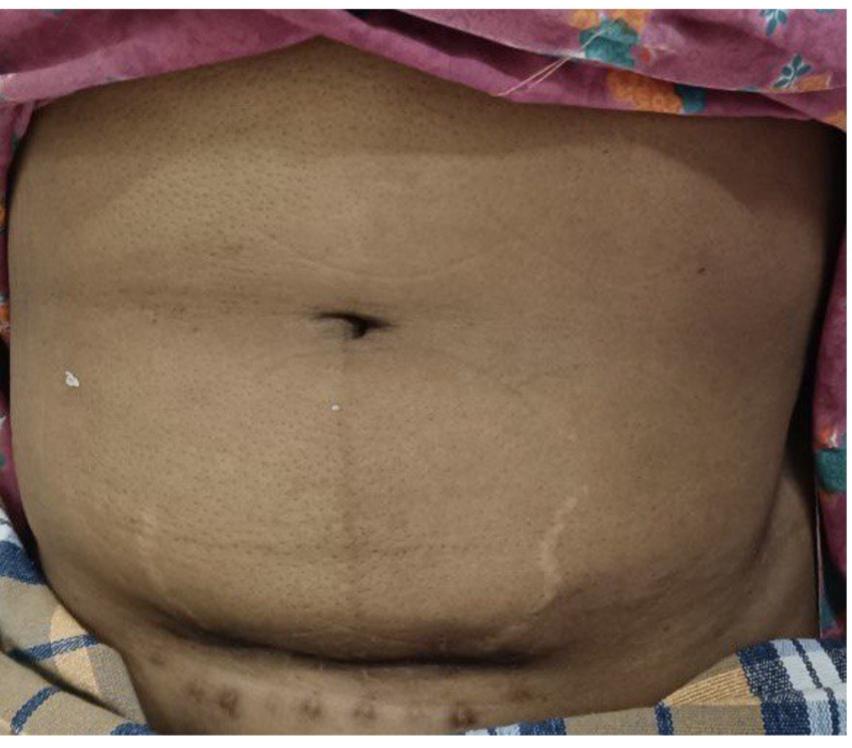This is online E log book to discuss our patient’s de-identified health data shared after taking his/her/guardian’s signed informed consent. Here we discuss our individual patient’s problems through series of inputs from available global online community of experts with an aim to solve those patients’ clinical problems with collective current best evidence-based inputs.
This e-log book also reflects my patient centred online learning portfolio and your valuable inputs on comment box is welcome
I’ve been given this case to solve in an attempt to understand the topic of “patient clinical data analysis" to develop my competency in reading and comprehending clinical data including history, clinical findings, investigations, and come up with diagnosis and treatment plan.
A 35 year old male patient, bartender by occupation and a resident of sathepally presented to the OPD with the chief complaints of
- Shortness of breath since 1 month
- Palpitations since 7 days
- Pedal oedema since 2 days
- Cough since 2 days.
HISTORY OF PRESENTING ILLNESS :
The patient was apparently asymptomatic 1 month back when he started having shortness of breath which was initially of grade 2 (NYHA classification) - slight limitation of activity -ordinary activity results in fatigue. Which aggravated to grade 3 (marked limitation of physical activity- less than ordinary activity causes dyspnea) 10 days ago.
It later progressed to grade 4 (dyspnea at rest)
7 days ago.
The shortness of breath was aggravated on lying down and was relieved on sitting upright
The shortness of breath was associated with palpitations since 7 days.
He gives history of paroxysmal nocturnal dyspnea. During these episodes, once he wakes up he voluntarily stops himself from going back to sleep.
He also complains of pedal edema since 2 days. It was of pitting type and it was up to the level of his ankle joint.
There were no aggravating or relieving factors as such.
The patient developed cough 2 days back. It is not associated with sputum.
He doesn’t have any complains of excessive sweating, chest pain, chest tightness, fever, decreased urinary output.
He gives a history of alcohol binge 8 days ago.
PAST HISTORY:
There are no similar complaints in the past.
He is not a known case of diabetes mellitus, hypertension, epilepsy, bronchial Asthma.
PERSONAL HISTORY
Diet - Mixed
Appetite - Normal
Bowel and Bladder- Regular.
Sleep - Disturbed
No known drug/food allergies
Addictions: he has consumed alcohol everyday since the age of 20 (15years). He drinks 90-180ml of brandy everyday.
He is exposed to smoke as he works in a bar
FAMILY HISTORY
Insignificant
GENERAL EXAMINATION
Patient was examined after a well informed consent in a well lit room
The patient is conscious, coherent and cooperative and well oriented to time place and person.
He is Moderately built and nourished.
There are no signs of pallor, icterus, cyanosis, clubbing, generalised lymphadenopathy
He had pedal Edema upto his ankle joint. It was of pitting type.
Truncal obesity is seen.
VITALS:
Temperature: 98.6°F
Respiratory rate: 18 cycles per minute
Pulse rate : 160 beats per minute
Blood pressure : 110/80 mm of Hg
SYSTEMIC EXAMINATION:
CARDIO VASCULAR SYSTEM:
Inspection:
There are no chest wall abnormalities
The position of the trachea is central.
Apical impulse is not observed.
There are no other visible pulsations, dilated and engorged veins, surgical scars or sinuses.
Palpation:
Apex beat was localised in the 5th intercostal space 2cm lateral to the mid clavicular line
Position of trachea was central
There we no parasternal heave , thrills, tender points.
Auscultation:
S1 and S2 were heard
There were no added sounds / murmurs.
RESPIRATORY SYSTEM EXAMINATION :
Bilateral air entry is present
Normal vesicular breath sounds are heard.
CNS EXAMINATION:
HIGHER MENTAL FUNCTIONS-
Normal
Memory intact
CRANIAL NERVES :Normal
SENSORY EXAMINATION
Normal sensations felt in all dermatomes
MOTOR EXAMINATION
Normal tone in upper and lower limb
Normal power in upper and lower limb
Normal gait
REFLEXES
Normal, brisk reflexes elicited- biceps, triceps, knee and ankle reflexes elicited
CEREBELLAR FUNCTION
Normal function
No meningeal signs were elicited
ABDOMINAL EXAMINATION:
There is no local raise of temperature.
No tenderness
The abdomen is soft
No organomegaly.
No scars, sinuses, fistulas and engorged veins
INVESTIGATIONS:
Complete blood picture :
Hemoglobin - 12 gm%
TLC - 14,900 cells/cu.mm
(Neutrophils- 89%)
PCV - 37.9%
RDW - 16.9%
MCV -70.9fl
MCH - 22.4pg
Platelet count - 2.84 lakhs/cu.mm
RBC - 5.36 million/cu.mm
Liver function tests :
Total bilirubin - 2.32 mg/dl
Direct bilirubin - 0.02 mg/dl
SGPT - 58 IU/L
SGOT - 34 IU/L
ALP - 93 IU/L
Total protein- 6.9 g/dl
Albumin - 4.2 g/dl
Albumin / Globulin ratio - 1.5
Complete Urine Examination: Normal
Serum creatinine: 1mg/dL
Blood urea: 22mg/dL
Troponin I - 22.5ng/dL
ECG:
2D ECHO:
Report: moderate LV dysfunction (EF- 38%)
X-ray
PROVISIONAL DIAGNOSIS:
Heart failure with dilated cardiomyopathy and atrial fibrillation
Treatment:
Tab. DILTIAZAM - 30mg PO BD
Tab. CORDARONE - PO BD
Inj. LASIX - 40mg IV TID
Tab. ECOSPRIN - 150mg PO OD
Inj. CLEXANE - 60mg SC OD
Tab. CLOPITAB - 75mg PO OD.
Tab ATORVA - 50mg PO OD
Tab. AUGMENTIN - 65mg PO BD
Tab. AZITHROMYCIN - 500mg PO BD
Inj. THIAMINE - 20mg IV TID













No comments:
Post a Comment